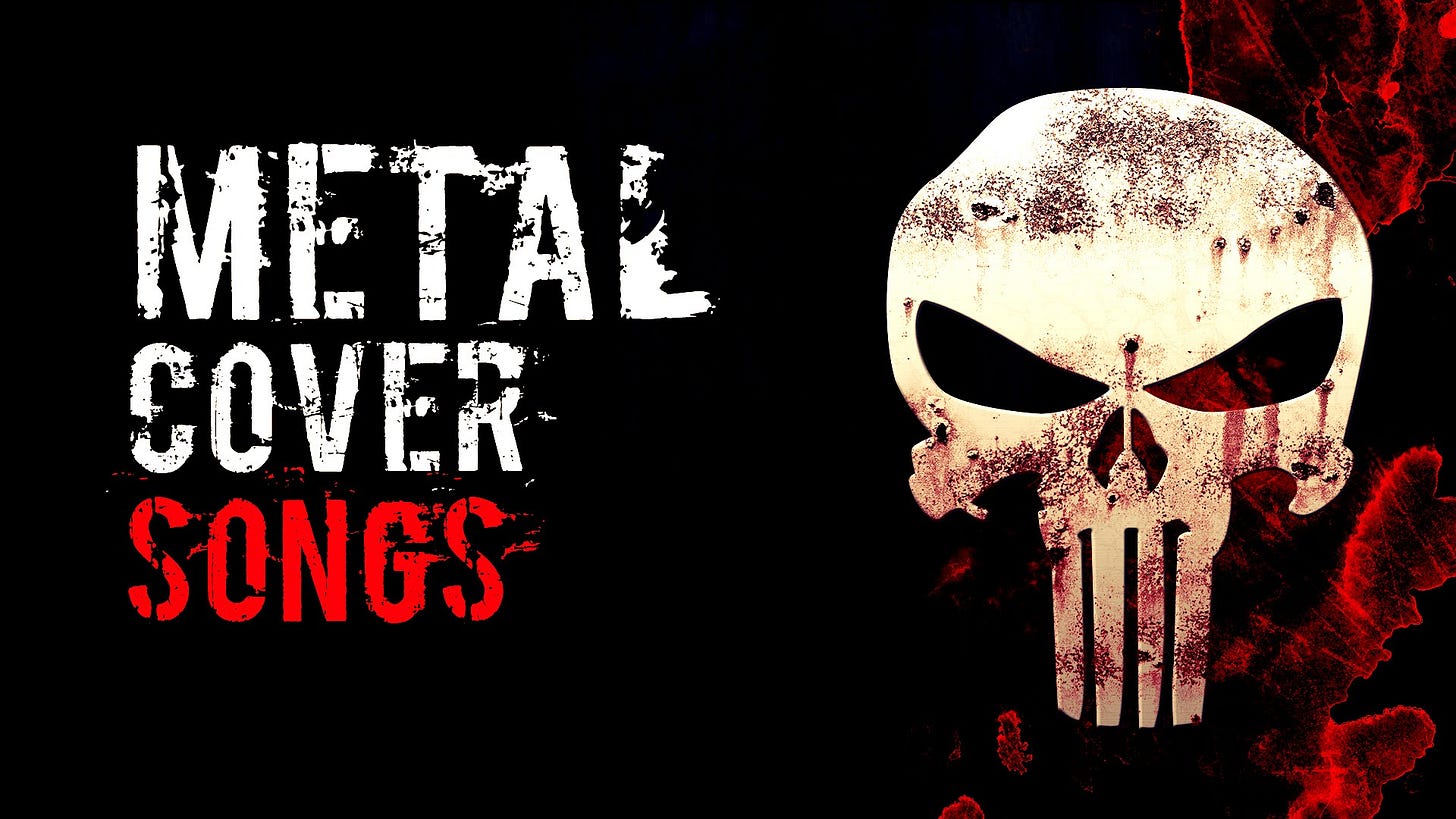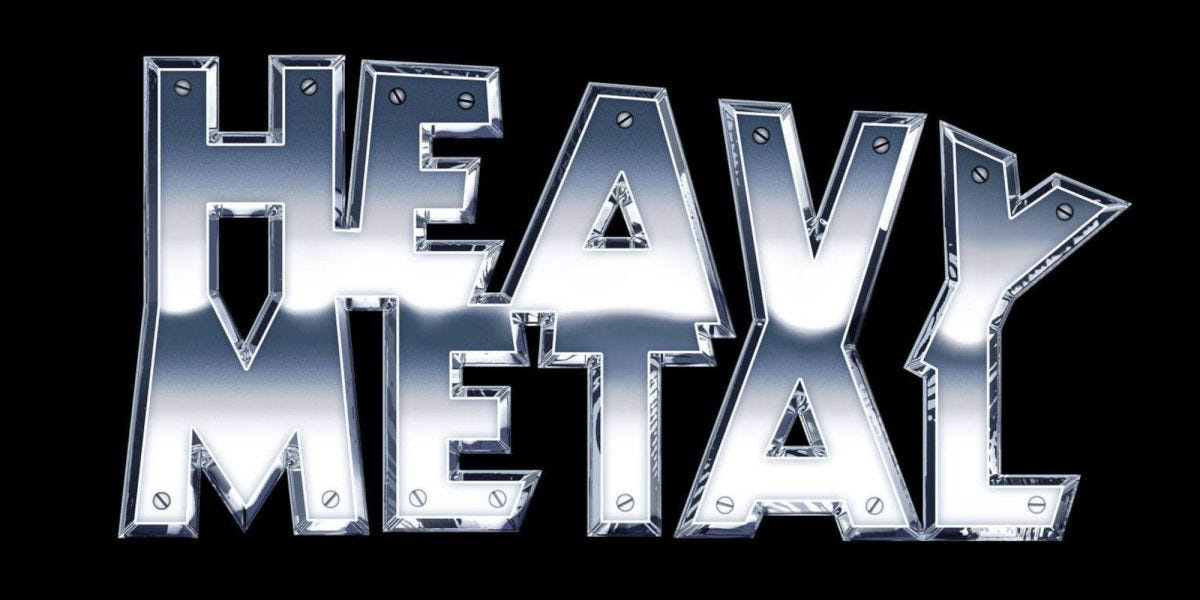Tears—Alica in Chains (original = Rush)
Here Alice in Chains comes frighteningly close to doing the impossible; that is covering Rush. Yes, many other bands have covered Rush, but the moment you put their covers next to the originals, you forget that these covers even existed. They’re wasted efforts at worst and nice homages at best.
But this one works. It certainly helps that it’s one of Rush’s earlier songs—before they reached their full potential and became the best band in the world bar none—but it also helps that both singer William DuVall and guitar player Jerry Cantrell put their best effort1 into it.
The differences between the cover and the original are subtle, yet telling. Geddy Lee plays a mellotron during and after the first chorus, while Alice in Chains sticks to layers of harmonised guitars, especially after the first—heavily overdubbed—chorus. For Rush, it’s a rare excursion into melancholy2, while for Alice in Chains the haunting atmosphere is grunge business as usual. And the extra vocals3 after the second chorus and the orchestrated outro are nice touches Alice in Chains weaves into the song.
A fine interpretation, but not outstanding enough to make the Top 15.
Dissident Agressor—Slayer (original = Judas Priest)
In retrospect, it makes sense. Metallica was hugely influenced—see ‘Honourable Mentions of the Metallica Kind’ by the New Wave of British Heavy Metal, while Slayer was hugely influenced by Judas Priest. Both—I’m talking Priest and Slayer—have the same sensibility, and are METAL through and through4.
Priest has the better solos. Slayer has the better drummers. Priest has defined the falsetto vocals of metal. Slayer has the most aggressive vocals in metal. Priest is more melodic. Slayer is faster. Both—at their best—are masters of dynamics. Both weren’t afraid to handle controversial topics.
With that in mind, Slayer covering Judas Priest maker perfect sense. Slayer—with this cover song—have the advantage in production values (Sin after Sin was an early Priest album) and the superior drums. And while Tom Arraya’s vocals don’t sear as high as the young Rob Halford’s, they do fit the song. Actually, it’s surprising how well this cover fits in the rest of the “South of Heaven5” material.
So why isn’t this one in the Top 15? Well. . . [Spoiler alert]6.
Highway Star—Metal Church (original = Deep Purple)
When Metal Church’s legendary, self-titled debut album was released, Dutch Aardschok Magazine (amongst many others) waxed lyrical over it, and rightfully so, as it is indeed a classic. However, they went so far as to declare that this cover is superior—‘much better’—than the original. In that particular matter, I beg to differ.
Yes, it sounds heavier than the original because it has two guitars. Yet you can’t replace Jon Lord from the Deep Purple classics because then you kill part of their soul. Yes, it’s faster than the original, but that doesn’t necessarily make it better. It’s a blistering version, alright, but if you listen closely it misses the class of the original.
The class? What class?
The late David Wayne was a great metal singer—nobody can quite sing “Gods of Wrath” like him—but he’s no Ian Gillan. In this cover, he screams rather than sings the lyrics, while Ian Gillan (who also, obviously, wrote the lyrics) makes them his own7; that is, he puts a feeling—bravura, innuendo, joy and sheer sophistication—in there that David Wayne just can’t match.
Kurt Vanderhoof is a great guitar player who has enriched the metal world with some world-class riffs, like those of “Beyond the Back”, “Metal Church”, “Fake Healer”, and others—but he’s no Ritchie Blackmore. Blackmore has bestowed us with unforgettable riffs—“Burn” and “Smoke on the Water”—genius songwriting—“Speed King”, “Stargazer”, “Gates of Babylon” to name but a few—and some of the very best guitar solos of all time—“Child in Time”, “Stargazer” and, indeed, “Highway Star”.
Blackmore’s solo in “Highway Star” is generally lauded as one of the best in the early seventies, and the best in the year of its release—1972. It combines intense feeling, superb craft, exquisite timing and ferocious speed, while also telling a story. Vanderhoof tries, but does not come close to the original.
Finally, let’s not forget the late, great Jon Lord. He was the melodic, symphonic, even organic counterpart to Blackmore’s fireworks. Supported by a phenomenal rhythm section, the total of Lord’s keyboards, Blackmore’s guitars and Gillan’s vocals8 was more than the sum of its parts. Take any of those away, and you’ll miss what made Deep Purple mark II magical.
Nevertheless, Metal Church’s cover is a very, very good one. But it would be wrong to say it’s better than the original, which is basically untouchable.
Support this writer:
Like this post!
Re-stack it using the ♻️ button below!
Share this post on Substack and other social media sites:
Join my mailing list:
(Alternatively, you could buy me a coffee.)
Author’s note: the countdown continues. And I’m finding that I need to scramble my Top 15 list because of a cover released on October 15, 2024, that I wasn’t aware of.
This road to unexpected discoveries is why I love the internet (there are plenty of reasons to hate the internet). Of course, now you want to know which song? But stay tuned and find out. As always, many thanks for reading!
And @substack: why does the “shareable video” option not work, in particular during the weekends? Sad, sad, sad! Make it work or delete it, for Christ’s sake!
Dare I say ‘soul’?
Other, similar songs from Rush: “Losing It” (from Signals), “Afterimage” (from Grace Under Pressure), “Bravado” (From Roll the Bones), and, inevitably, “Ghost Rider” (from Vapor Trails);
Which I suppose is Jerry Cantrell singing;
We’ll forgive Priest for Turbo, right? Right?
Slayer’s second best album. Because it’s well-nigh impossible to improve on “Reign in Blood”, which is one of the very best metal albums of all time;
This is your evil author telling you to stay tuned…;-)
Partly because they are his own;
Which were sometimes used as an instrument;





